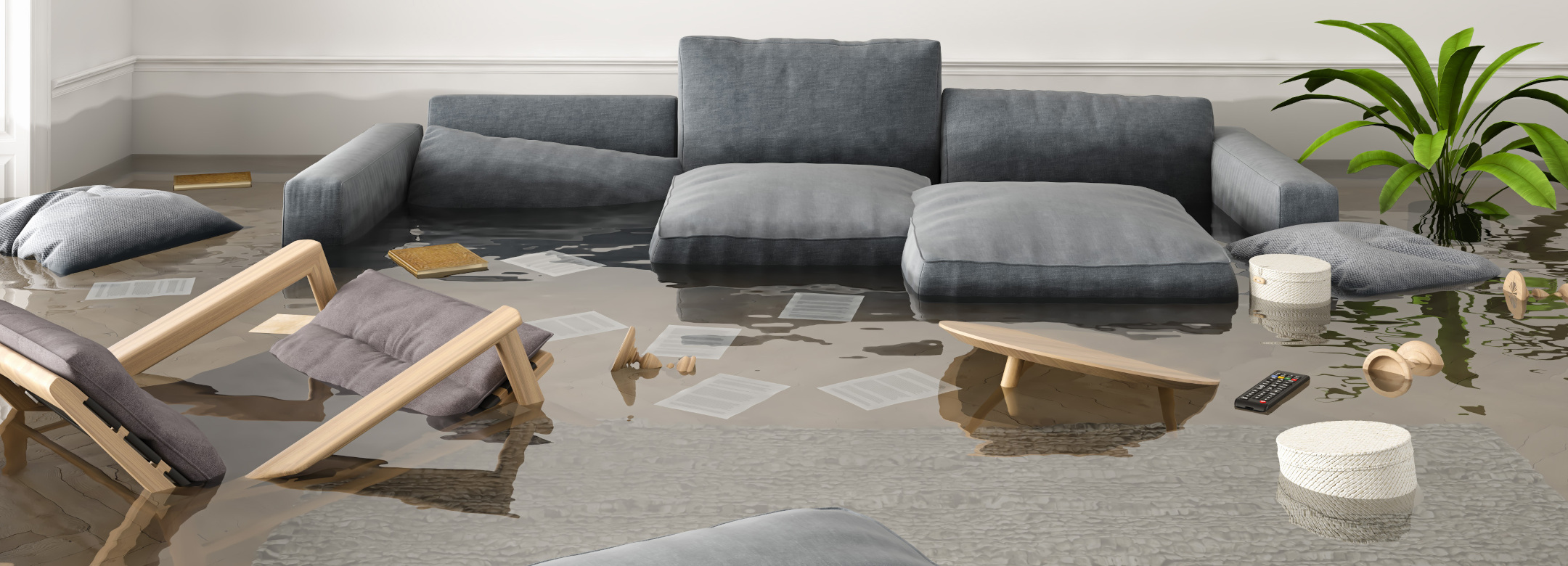Types of Floods
Overland flood
Any flood where water flows over or through normally dry land is categorized as an overland flood. Causes include:
- Existing drainage infrastructure that is overwhelmed by severe weather
- High levels of precipitation over several days
- Heavy rainfall over a short period of time
- Rapid snowmelt
- Water levels in a river or stream that exceed its capacity
- Dam failure
Overland flooding can cause immense damage to homes and business. It is one of the most frequent and costly hazards affecting people and economies around the world. The one-two punch of 1999’s Hurricane Floyd and Tropical Storm Dennis resulted in severe flooding over a wide swath of the Mid-Atlantic region. The flooding – not the storms themselves – caused the lion’s share of the billions of dollars in damage that resulted from those storms.
Coastal flood
The inundation of low-lying areas, whether ocean coastline or lake shoreline, that would normally be dry land is categorized as coastal flooding. High tides, heavy rainfall, intense onshore winds and storm surge, or any combination of these, can cause unusually high water levels that are capable of damaging property and endangering life. Low-lying regions in places such as coastal Louisiana; Charleston, South Carolina; and Savannah, Georgia, see frequent coastal flooding events, often multiple times per year.
Urban flood
Heavy rainfall and overland flooding that occur in densely populated areas can easily overwhelm drainage infrastructure. This is categorized as an urban flood. Large, highly concentrated areas of impermeable materials such as steel, concrete, pavement, etc., give the water nowhere to go, leading to high levels of water runoff. Damage from drain and sewer backups, flooding of businesses and multi-unit residences, and disabled roadways and public transportation make urban flooding an incredibly costly event.
Flash flood
Typically caused by sudden, heavy rainfall, hurricanes or dam failure, a flash flood can be incredibly dangerous. This type of flood leaves fewer than six hours – and in some cases, mere minutes – between rainfall and the onset of flooding. Flash floods often produce fast-moving water that may carry debris, building materials, cars, etc.
Regions Prone to Flood
Regions across much of the continental U.S. are prone to flooding, from the Eastern Seaboard west as far as the Rockies, in Northern California and the Pacific Northwest — the list is more inclusive than exclusive. As the Federal Emergency Management Agency (FEMA) reminds us: “There is no such thing as a ‘no-risk zone,’ but some areas have a lower or moderate risk.”
As weather patterns become less predictable, we are seeing outlier events much more frequently — events that can be even more devastating for those who may be unprepared for and inexperienced in coping with this type of damage.
Vulnerable Times of Year
Our specialists in the field note that these days, there’s no telling when floodwater may hit. Hurricane season – June through November – is a common time of year to expect (and be prepared for) overland and flash flooding. This is compounded in the summer by seasonal rainfall across many regions. But as more sporadic weather patterns and severe events diminish our ability to project outcomes, it is becoming ever more important to prepare for these events, even in times and places where we’ve never seen them before.
